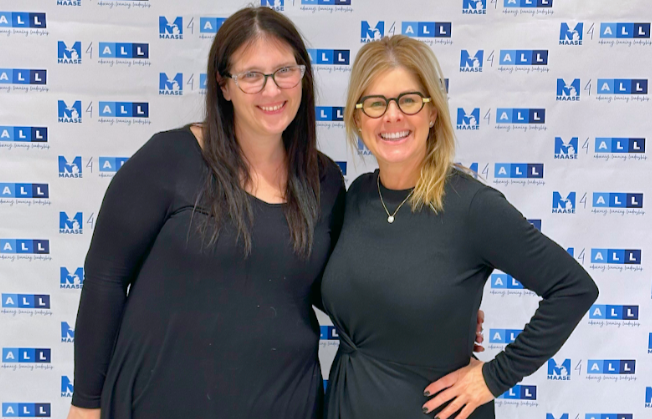Pushing the Envelope: Making Up for Learning Loss Due to COVID-19 for Autistic Children
A Letter From the CEO
Federal relief packages passed by Congress in 2021 provide school districts with billions of dollars in recovery funding to help schools support students during and after the pandemic. The funds target learning loss due to COVID-19 and can also be used to provide much-needed social and emotional support for students.
These funds create a unique opportunity for transforming the way schools provide services to all students. There is also an opportunity to determine how to best address the needs of students who are struggling: students from under-resourced communities, students who are English language learners, and autistic students or those with other special needs. These groups of students have been hit especially hard by the changes to routine and the disruption of in-person learning.
How can education leaders make the most of this opportunity? How can they spend their funds in ways that will best serve students, especially students most in need?
The following is a list of ideas culled from recent articles and from my conversations with school leaders, teachers, and parents on how to make the most of the American Rescue Plan funds:
1. Listen.
Schools and districts need to listen to their communities about how best to develop a recovery strategy. Who knows best what might work and what might be the best way forward? Ask parents, teachers, school specialists, and school leaders for their ideas on how to respond to student needs. Share what you have learned with others in the community. Where are the greatest needs? What are the best evidence-based solutions to address those needs? How will we measure success?
2. Target Support for Underserved Students
Students from low-income households, Black and Latino students, and English Learners have been especially hard hit by the pandemic. New funding provides an opportunity to “build back better” and not to return to inequities in the way our public school systems are structured. Providing preschool and summer learning opportunities for all children from low-income families, fixing inequities in access to technology (devices and Wi-Fi), and providing strong mental health support for children and families in need will serve all of society. The pandemic has hit minority communities much harder than other communities. Social and emotional support for children who have experienced the loss of family members or family income needs to be prioritized, including making sure there is sufficient access to therapists and counselors.
|
Language Builder: Academic Readiness Intervention System |
3. Focus on Teaching and Learning
Investing in high-quality curriculum materials should be a priority as well as professional development support for teachers to effectively use new curriculum materials.
It will surprise no one that I think one of the most important investments schools can make emerging from the pandemic is high-quality, well-supported, distance learning-ready curriculum materials (including adequate support for teachers to understand and use those materials). -- Morgan Polikoff, Associate Professor of Education, USC Rossier School of Education.
For autistic children, investing in an evidence-based curriculum that is designed specifically for them is essential. Too often schools try to rely on curriculum materials that have not been designed with the needs of autistic children in mind and students struggle as a result. The ARIS® Academic Readiness Intervention System is a comprehensive supplemental curriculum that is based on extensive research about how best to teach autistic children. It is one of the few curricula available that is designed specifically for the needs of autistic children.
4. Create a Plan and Provide Training for Using Remote Learning When Needed
 Even after the pandemic is over, remote learning is here to stay. New models of online teaching and learning can work if strong supports are in place. Three key factors are needed for remote learning to be effective, according to researchers from the Economic Policy Institute:
Even after the pandemic is over, remote learning is here to stay. New models of online teaching and learning can work if strong supports are in place. Three key factors are needed for remote learning to be effective, according to researchers from the Economic Policy Institute:
1) Students need consistent access to the internet,
2) students need consistent access to devices, and
3) most importantly, teachers need to have training and support for making the most effective use of remote learning.1
Lack of training and effective use of technology is not limited to older teachers. All teachers need professional development in how to use technology for remote learning. How to use technology does not simply mean how to use the software: Dozens of questions need to be answered in terms of creating lesson plans, addressing behavioral issues, and meeting the needs of autistic children and children with special needs.
5. Strengthen Programs That Address Social Emotional Learning (SEL)
Addressing learning loss is crucial to make up for all the hours lost in time in school due to the pandemic, but addressing children’s social and emotional needs is equally important. The isolation and stress created by the pandemic, in addition to a growing national awareness of the need to address racial injustice, has piled on added layers of stress, loss, and increases in anxiety and depression in children and adults.
Addressing the social and emotional needs of students needs to come from the bottom up to address the needs of communities and individual students. At the same time, there has been a significant rise in resources and organizations that are designed to help students address the social and emotional needs of their students. One of the best-known organizations for supporting schools in SEL is the Collaborative for Academic, Social, and Emotional Learning (CASEL). CASEL is a trusted non-profit that provides resources and assistance to schools.
Angela Nelson, CEO of STAGES® Learning

Editor: Autism Resources & Community
For more information about the funds for recovery see: U.S. Education Department Releases State Plan Template for the American Rescue Plan Elementary and Secondary School Emergency Relief Fund
References:
1. COVID-19 and student performance, equity, and U.S. education policy

Angela Nelson, J.D., Ed.M.
Angela Nelson is the creator of the widely-recognized Language Builder Picture Card Series, and the creator and lead author for the Language Builder ARIS curriculum. Angela received her BA and JD from UCLA where she studied and practiced behavior psychology under Dr. Ivar Lovaas, and her Ed.M. at the Harvard Graduate School of Education, with a focus on technology innovation and education. As Founder and CEO of Stages Learning Materials, Angela has created autism, special needs and early childhood curriculum products since 1997. In addition to her duties at Stages, Angela writes for multiple industry publications and is Chair of the Education Market Association.





